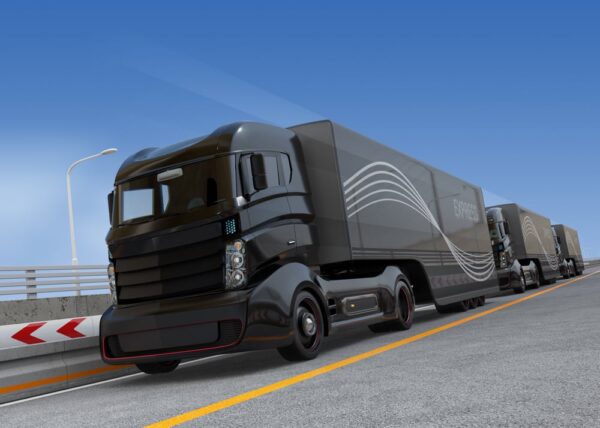
If your Uber or Lyft car has ever rolled up with a roving camera on the roof, you may have felt a twinge of excitement (or fear) at your first chance of riding in an autonomous vehicle. But while consumers have their eyes trained on self-driving cars, company owners are looking forward to a future of self-driving commercial trucks that could increase fuel efficiency and boost their profits.
Self-driving semi-trucks may potentially improve the safety of the country’s highways and interstates, too. In 2015, more than 4,000 Americans were killed and around 116,000 injured in large truck accidents.1 Data suggests 94 percent of crashes are attributable to driver error in some way, and self-driving trucks are often touted as the solution to this problem.2
Despite ongoing testing of self-driving trucks by organizations like Otto, Waymo, Tesla, and Embark – including a successful cross-country trip – our laws have a long way to go before they match the pace of this burgeoning industry.
What Self-Driving Trucks Can (And Can’t) Do
When people think of self-driving vehicles – trucks or otherwise – they tend to envision a utopian future where wheeled machines are cruising around hauling cargo with no human operator insight. While this may be the end goal years from now, that’s not the reality of the situation today.
Self-driving trucks can be more accurately described as trucks that use maps, cameras, lasers, radars, and other sensors to navigate highways and adjust their paths in real-time. Highway driving is the real focus of the technology right now, as it is much easier to program a vehicle to drive in a straight line and make lane changes every now and then than it is to calculate complex maneuvers like left-hand street turns. The automobile industry has been taking baby steps toward this kind of technology for years now by further developing and perfecting safety features like cruise control, backup cameras, and automatic braking. Self-driving vehicles just apply these concepts on a grander scale.
Human drivers will be needed in some capacity to operate these trucks until our technology becomes more advanced. After all, truck drivers do far more than sit behind the wheel. They will still need to be in the cabin to make repairs, have conversations with other workers and handle emergencies if the automated technology fails. Additionally, self-driving trucks are not yet equipped to drive around smaller cities and towns, so truck drivers will need to take the wheel in these instances.
The Current Regulation of Self-Driving Trucks
Right now, self-driving trucks are legally regulated at the state level only. So far, only 21 states and D.C. have actually passed laws pertaining to autonomous vehicles more broadly.3 You can keep track of these laws using the National Conference of State Legislatures’ online database (note: despite their name, this is a non-governmental organization).
The federal government has also relied on the National Highway Traffic Safety Administration (NHTSA) to provide guidelines at the federal level, but these are more accurately described as recommendations than actual regulations since vehicle makers can choose not to follow the rules. Simply put, the rules and regulations around autonomous vehicles are pretty nebulous at this point, whether we’re talking about trucks or not.
The SELF DRIVE Act
The most notable breakthrough in autonomous vehicle legislation is the SELF DRIVE Act, which was introduced to the House of Representatives on July 25, 2017, and passed after amendments on September 6, 2017, in an astonishing bipartisan vote of 54-0. The act outlines a plan to:
- Clarify states’ roles in regulating autonomous vehicles
- Give the NHTSA the power to create safety standards for “design, construction and performance” of “highly automated vehicles”4
- Exempt up to 100,000 vehicles per company from safety regulations so companies can test more vehicles more easily
- Ensure drivers are protected from threats like hacking and privacy violations
Notably, the SELF DRIVE Act does not include self-driving trucks. This is because the bill got pushback from unions, particularly the Teamsters, who are advocating on behalf of truck drivers who may lose their jobs to automation technology. The House accommodated these concerns by specifying the act does not cover vehicles:
- Weighing over 10,000 pounds
- Capable of carrying 10 or more passengers
- Transporting dangerous material
In effect, this excludes any commercial truck used to transport cargo. But here’s where it gets even more complicated: the House and Senate committees working on this bill specialize in different aspects of commerce and transportation. The House Energy and Commerce Committee does not usually handle trucking issues, whereas the Senate Commerce, Science, and Transportation Committee have dealt with trucking in the past. In other words, by the time this bill goes through the Senate, and potentially to the President for a signature, it may include provisions regarding self-driving trucks. Only time will tell.
Getting Compensation for Truck Accident Injuries in Central and Southern Maine
Both self-driving and regular commercial trucks can cause massive damage to smaller cars and badly injure their occupants. Reasons for truck accidents range from driver distraction and fatigue to vehicle malfunction. No matter the reason, the attorneys at Hardy, Wolf & Downing Injury Lawyers will fight for the compensation you deserve if you’ve been injured in a commercial truck accident.
As we mentioned, the laws around truck accidents, especially those involving self-driving trucks, can be highly confusing. That’s why you need a lawyer well-versed in local laws to ensure you get every bit of the money you’re owed. If you’ve been injured in a truck accident and need truck accident lawyers, call us today at 1-800-INJURED for your FREE lawsuit review.
1 https://crashstats.nhtsa.dot.gov/Api/Public/ViewPublication/812373
2 https://crashstats.nhtsa.dot.gov/Api/Public/ViewPublication/812115
3 http://www.ncsl.org/research/transportation/autonomous-vehicles-self-driving-vehicles-enacted-legislation.aspx
4 https://www.congress.gov/bill/115th-congress/house-bill/3388/text

